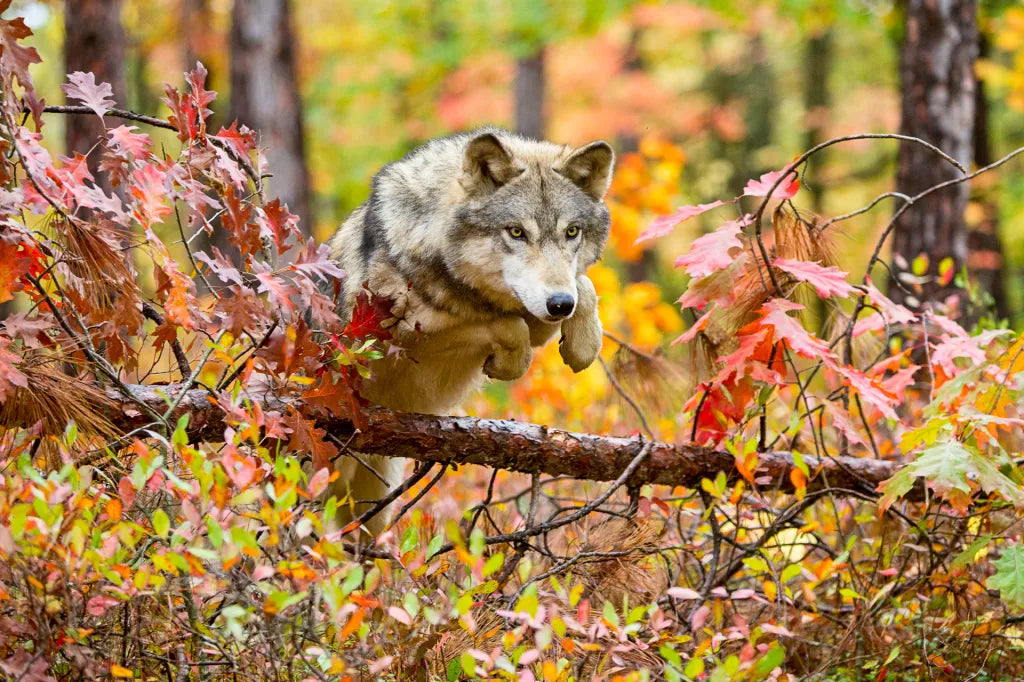
Yellowstone's Aspen Trees Thrive Again Thanks to the Return of Gray Wolves
Yellowstone's Aspen Trees Thrive Again: The Return of Gray Wolves
In a remarkable tale of ecological recovery, Yellowstone National Park’s aspen trees are flourishing for the first time in 80 years, thanks to the reintroduction of gray wolves. A recent study highlights how these apex predators have reshaped the park’s ecosystem, allowing young aspen saplings to grow and thrive after decades of struggle.
The Ripple Effect of Wolves’ Absence
In the 1930s, gray wolves vanished from Yellowstone due to hunting, habitat loss, and government-led eradication efforts. Without their primary predator, the elk population skyrocketed, overgrazing the park’s vegetation, including the iconic quaking aspen trees. By the 1990s, not a single aspen sapling could be found in the park, as elk consumed them before they could mature. This overgrazing threatened the long-term survival of Yellowstone’s aspen population.
Wolves Return, Aspens Rebound
The reintroduction of gray wolves to Yellowstone in 1995 marked a turning point. As wolves began preying on elk, their population declined, giving aspen saplings a chance to grow. A study published in Forest Ecology and Management found that 43% of surveyed sites in northern Yellowstone now have young aspen trees with trunks at least two inches in diameter—a level of growth unseen in decades. Between 1998 and 2021, aspen sapling density increased an astonishing 152-fold.
Lead author Luke Painter noted, “It’s a pretty good indication that we’re getting some new trees. As they get bigger, they get more resilient.” This resurgence showcases the power of a balanced ecosystem, where predators play a critical role in maintaining biodiversity.
A Trophic Cascade: Beyond the Aspens
The return of wolves has sparked a “trophic cascade,” a chain reaction of ecological benefits rippling through Yellowstone. The recovery of aspen trees supports species like woodpeckers and tree swallows, which rely on their trunks for nesting, and beavers, who use the wood for food and dam-building. The wolves’ influence extends beyond flora, fostering greater habitat diversity and supporting a healthier ecosystem.
However, scientists caution that other factors may also contribute. Human hunting, predation by grizzly bears, and the rising bison population could be influencing elk numbers and vegetation patterns. While northern Yellowstone sees a strong aspen recovery, other areas of the park still face challenges.
A Beacon of Hope for Conservation
The revival of Yellowstone’s aspen trees is a testament to the impact of thoughtful conservation efforts. As Painter stated, “This is a remarkable case of ecological restoration. Wolf reintroduction is yielding long-term ecological changes contributing to increased biodiversity and habitat diversity.” The return of gray wolves serves as a powerful reminder of nature’s interconnectedness and the importance of protecting keystone species.
At We3Wolves, we celebrate stories like this that highlight the vital role wolves play in restoring balance to our ecosystems. Yellowstone’s thriving aspens are a living example of how conservation can spark hope and renewal for wildlife and wild places alike.
Source: Article by Ainsley Brown, edited by Jaclyn Anglis, published July 29, 2025, updated July 31, 2025.
